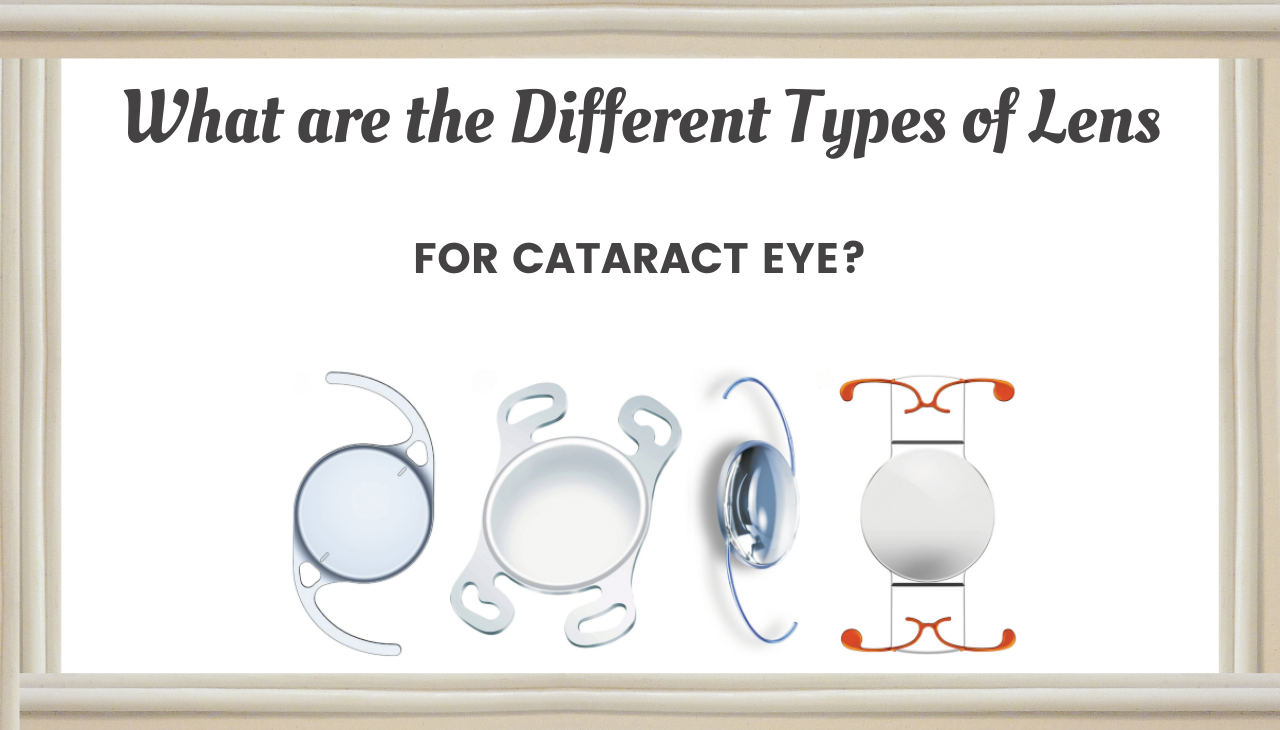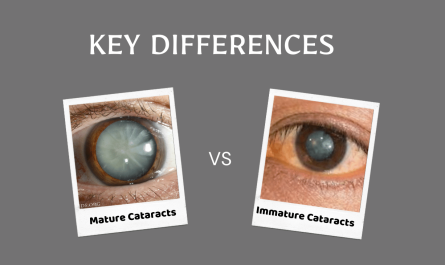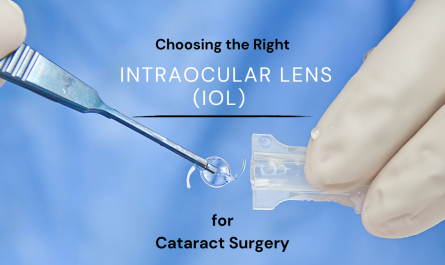Introduction
Cataract is a common optical condition that affect people as they age. They can develop in one or both eyes and often result in clouded or blurred vision. The good side is that cataracts can be effectively treated through surgery, during which the clouded natural lens of your eye is replaced with an artificial intraocular lens (IOL). There are many different types of IOLs available, each with its own set of advantages and considerations. We help you understand the various types of lenses for eye cataracts, helping you understand the options and make an informed decision about your cataract surgery.

Monofocal Lenses for Cataract Eye
Monofocal lenses are the most common type of IOL used in cataract surgery. These types of lenses have a single focal point, which means they provide clear vision at a specific distance, typically either near or far. Most patients opt for distance-focused monofocal lenses, which allow them to see clearly at a distance but require reading glasses for close-up tasks.
Pros of Monofocal Lenses:
- Good for distance vision.
- Covered by most insurance plans.
- Few visual disturbances.
Cons of Monofocal Lenses:
- Require reading glasses for close-up tasks.
- Limited to one focal distance.
Multifocal Lenses for Cataract Eye
Multifocal lenses are designed to provide both near and distance vision without the need for reading glasses. They have multiple focal points that enable you to see objects at various distances clearly. Multifocal lenses are an excellent option for people who doesnt want to use glasses after cataract surgery.
Pros of Multifocal Lenses:
- Reduced dependency on reading glasses.
- Enhanced visual range (near and far).
- Greater overall convenience.
Cons of Multifocal Lenses:
- Potential for visual disturbances, such as halos and glare.
- Not covered by all insurance plans.
Accommodative Lenses
Accommodative lenses are designed to mimic the natural flexibility of the eye’s crystalline lens. This allows them to adjust their focal point based on your visual needs, similar to how the natural lens changes shape to focus on objects at different distances. Accommodative lenses provide both distance and near vision without the need for reading glasses.
Pros of Accommodative Lenses:
- Natural focus adjustment.
- Good for near and distance vision.
- Reduced reliance on glasses.
Cons of Accommodative Lenses:
- Limited availability.
- May not work as effectively for all patients.
Toric Lenses
Toric lenses are a specialized type of IOL designed to correct astigmatism, a common refractive error. Astigmatism occurs when the cornea or lens has an irregular shape, causing blurred vision at all distances. Toric lenses are shaped to counteract this irregularity and provide clear vision, reducing the need for astigmatism-correcting glasses or contact lenses.
Pros of Toric Lenses:
- Correction of astigmatism.
- Improved visual clarity.
- Reduced need for glasses or contact lenses.
Cons of Toric Lenses:
- Slightly higher cost.
- May still require reading glasses if presbyopia is present.
Extended Depth of Focus (EDOF) Lenses
EDOF lenses are a relatively new addition to the IOL options available for cataract surgery. They aim to provide an extended range of vision, with clear focus from near to intermediate distances, making them a great choice for activities like using a computer or reading a menu.
Pros of EDOF Lenses:
- Extended range of vision.
- Clear focus on near and intermediate tasks.
- Reduced need for reading glasses.
Cons of EDOF Lenses:
- Potential for minor visual disturbances.
- Limited availability and higher cost.
Choosing the Right Lenses for Cataract Eye
Selecting the right IOL for your cataract surgery is a crucial decision that depends on your individual needs, lifestyle, and visual preferences. It’s essential to have a thorough discussion with your eye surgeon to understand the pros and cons of each lens type and determine which one aligns with your goals.
Factors to consider when choosing an IOL include:
- Consider your daily activities and visual needs.
- Visual preferences
- Budget
- If you have astigmatism, Toric lenses are the best option for you
- Overall health
- Personal preference
Conclusion
Cataract surgery is a highly effective optical procedure that can improve your vision and quality of life. The choice of the right IOL is a crucial aspect of this surgery, as it will determine your visual outcome. Whether you prioritize clear distance vision, reduced dependence on reading glasses, or correction of astigmatism, there is an IOL option that can meet your needs.
If you’re considering cataract surgery, Laxmi Eye Institute offers a compelling choice. With affordable prices, internationally recognized excellence, and a patient-centric approach, it stands as a beacon of quality eye care in Navi Mumbai with centers at Panvel, Kharghar, Kamothe, and Dombivali.




